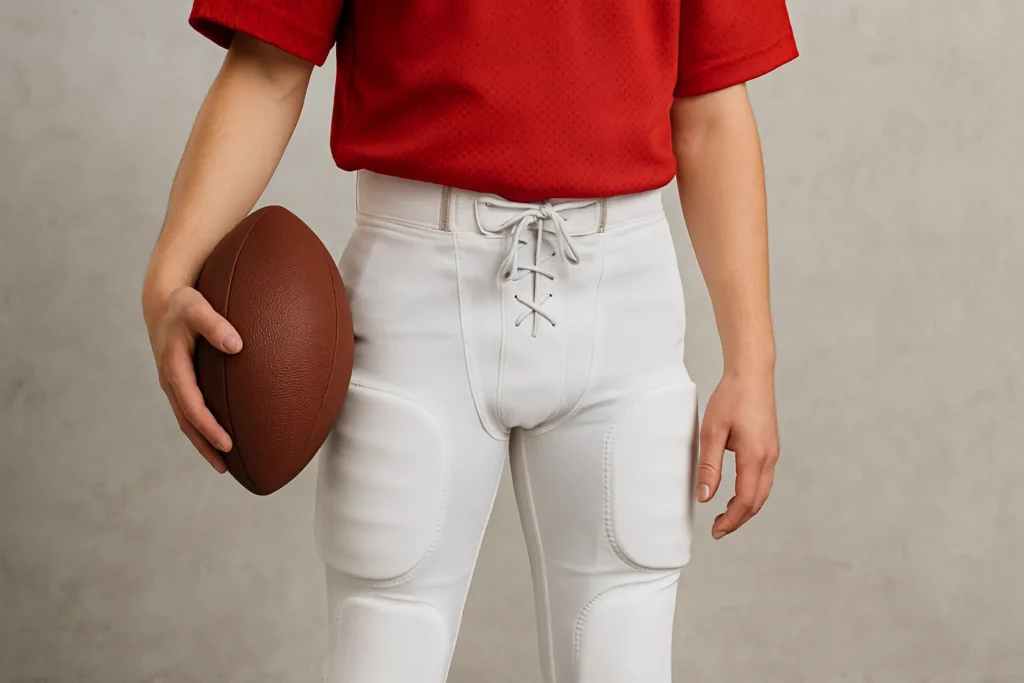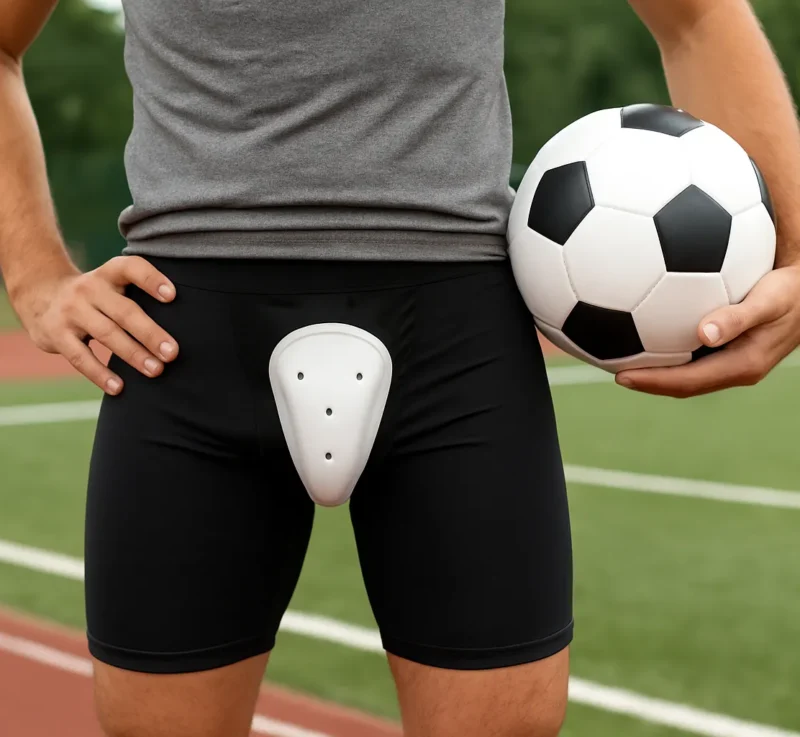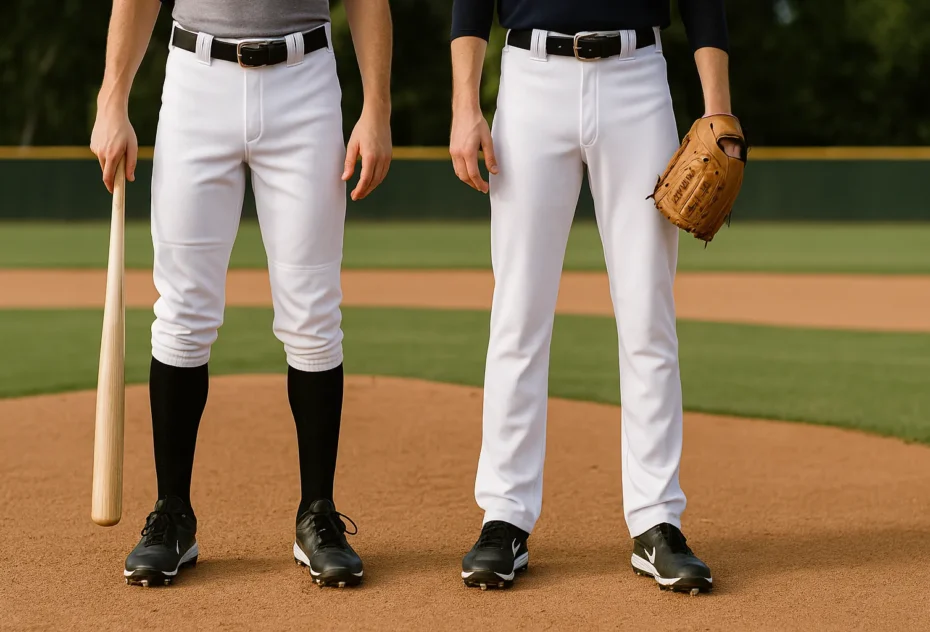In the world of football, every piece of gear plays a crucial role in a player’s performance and protection. Among these essential items, football pants are often overlooked despite their significant impact on the game. These pants are not just ordinary athletic wear; they are engineered to withstand the rigors of the sport, providing both comfort and safety. As we delve into the intricate details of football pants, we’ll explore the variety of materials used in their construction, each offering unique benefits that enhance a player’s experience on the field.
From the types of fabric that ensure durability and flexibility to the different styles that cater to various playing conditions and personal preferences, football pants are a critical component of any player’s uniform. This guide will not only inform you about the materials and benefits but also provide practical advice on how to choose the right pair of football pants, taking into account factors such as climate and individual needs. By the end of this article, you’ll have a comprehensive understanding of why football pants are indispensable for both protection and performance.
Materials used to make football pants
When it comes to football pants, the choice of material is crucial for both performance and protection. One of the most commonly used materials is polyester, a synthetic fabric renowned for its strength, light weight, and wrinkle-resistant properties. Polyester is highly valued in sportswear because it effectively wicks sweat away from the body, keeping players cool and dry even during intense games. This moisture-wicking ability not only enhances comfort but also prevents chafing and skin irritation, making polyester an excellent choice for football pants.
Another staple in the world of football pants is spandex, a synthetic fabric known for its exceptional elasticity and form-fitting qualities. Spandex allows for a wide range of motion, which is essential for the dynamic movements required in football. This material ensures that pants do not restrict players’ movements, allowing them to perform at their best. Additionally, spandex helps maintain a snug fit, reducing the risk of pant legs riding up or causing discomfort during play.
Nylon is another synthetic fabric that plays a significant role in the construction of football pants. Known for its strength, durability, and abrasion resistance, nylon can withstand the rigors of the sport, making it ideal for areas of the pants that are subject to frequent contact and wear. Nylon’s ability to endure rough play and maintain its integrity over time makes it a reliable choice for football gear, ensuring that pants remain functional and protective throughout the season.
While synthetic fabrics dominate the market for football pants, natural materials like cotton are sometimes used as well. Cotton is appreciated for its softness, breathability, and absorbency, which can provide comfort and help regulate body temperature. However, cotton is not as durable as synthetic fabrics and may not offer the same level of protection against abrasions and tears. This makes it less common in high-performance football gear, but it can still be found in some designs for added comfort.
Lastly, leather is a natural material occasionally used in football pants, particularly in areas that require extra protection and durability. Leather is strong, durable, and water-resistant, making it effective in safeguarding against impacts and environmental factors. However, leather comes at a higher cost compared to synthetic fabrics, which can be a consideration for players and teams on a budget. Despite its cost, leather remains a premium choice for those seeking top-tier protection and longevity in their football pants.
Benefits of wearing football pants
Football pants are an integral part of a player’s gear, offering numerous benefits that enhance both safety and performance on the field. One of the primary advantages is the protection they provide against injuries. Football is a high-contact sport, and these pants are designed to shield players from impacts, scratches, and abrasions during tackles, falls, and other physical interactions. The strategic use of materials like nylon and leather in high-impact areas ensures that players are well-protected, reducing the risk of injuries and allowing them to play with confidence.
In addition to safety, football pants are crafted to support optimal performance. The combination of polyester and spandex offers a lightweight, flexible fit that allows players to move freely and execute a wide range of motions without restriction. This is crucial for agility and speed, enabling players to change direction quickly and make precision moves. The moisture-wicking properties of polyester keep players cool and dry, preventing discomfort caused by sweat and helping to regulate body temperature. This is particularly beneficial in hot and humid conditions, where maintaining a dry and comfortable environment can significantly impact a player’s endurance and focus.
Comfort is another key benefit of football pants. The breathable nature of materials like cotton and the moisture-wicking capabilities of polyester ensure that players remain comfortable throughout the game. This is essential for maintaining concentration and avoiding distractions caused by discomfort. The form-fitting design of these pants, enhanced by spandex, provides a snug fit that supports the body without feeling restrictive. This comfort aspect is vital for long games and intense training sessions, where players need to be at their best for extended periods.
Lastly, football pants offer psychological benefits that contribute to a sense of belonging and team spirit. These pants are often customizable with team colors, logos, and numbers, allowing players to express their identity and unity. This visual representation of team cohesion can boost morale and foster a sense of camaraderie among players. The psychological impact of feeling part of a team can enhance motivation and overall performance, making football pants an essential part of the game’s culture and experience.
Different types of football pants
When it comes to football, the type of pants you choose can significantly impact your performance and comfort on the field. One of the most common types is game pants, designed specifically for match days. These pants prioritize breathability and flexibility, ensuring players can move freely and stay cool under pressure. Often made with a blend of polyester and spandex, game pants offer a lightweight, moisture-wicking experience that minimizes chafing and skin irritation.
On the other hand, practice pants are built to withstand the rigors of intense training sessions. Durability is key for these pants, as they need to endure frequent use and contact. Typically constructed with robust materials like nylon or reinforced with leather patches, practice pants are designed to protect players from abrasions and impacts. They may also feature additional padding to safeguard against injuries, making them a reliable choice for tough practice environments.
For those seeking versatility, integrated pants offer a combination of game and practice features. These pants often include built-in padding and are made from a blend of durable and flexible materials. Integrated pants are ideal for players who want a single pair of pants that can be used in various scenarios, from practice sessions to game days. They provide a balanced level of protection and comfort, making them a popular choice among athletes.
Lastly, flag football pants cater to the unique requirements of flag football. These pants emphasize lightweight materials for agility and ease of movement, crucial for the fast-paced nature of the sport. Flag football pants are often made with breathable fabrics like polyester to keep players cool and dry. They may also feature reinforced areas to withstand the pulling and tugging of flags, ensuring durability without compromising performance.
How to choose the right football pants
Choosing the right football pants is crucial for optimizing performance and ensuring safety on the field. One of the primary considerations is the climate in which you’ll be playing. In warmer climates, materials like polyester and spandex are excellent choices due to their moisture-wicking and breathable properties, which help keep players cool and dry. Conversely, in colder weather, pants with cotton or even thermal linings can provide additional warmth and comfort.
Durability is another critical factor when selecting football pants. The physical demands of the sport necessitate materials that can withstand rigorous wear and tear. Nylon is particularly renowned for its strength and abrasion resistance, making it ideal for areas of the pants that experience frequent contact. For extra protection, especially in high-impact positions, leather reinforcements can be highly effective, though they come at a higher cost.
The protective benefits of padded football pants cannot be overstated. Padded pants offer an additional layer of safeguarding against impacts and falls, reducing the risk of injuries. These are particularly beneficial for positions that involve a lot of contact, such as linemen and running backs. However, it’s important to ensure that the padding does not restrict movement or add unnecessary bulk, which could hinder performance.
Lastly, a good fit is essential for both comfort and performance. Football pants should fit snugly without being too tight, allowing for a full range of motion without any restriction. Spandex, with its elasticity and form-fitting qualities, is particularly good at maintaining a comfortable fit. Trying on different styles and sizes can help you find the perfect balance between support and flexibility. By considering these factors, you can make an informed decision that enhances your game experience and ensures your safety on the field.
Conclusion
Football pants are an indispensable piece of gear for any player, serving as a critical component of both protection and performance on the field. These specialized garments are designed to offer a unique blend of comfort, mobility, and durability, ensuring that players can focus on their game without worrying about discomfort or injury. The choice of material, whether it be the lightweight and moisture-wicking properties of polyester, the elasticity of spandex, or the rugged durability of nylon, plays a pivotal role in the overall effectiveness of football pants.
When selecting football pants, it is crucial for players to consider a variety of factors to ensure they meet their specific needs. Climate, personal preferences, and the intensity of play are all variables that should influence the decision-making process. For example, players in cooler climates might opt for materials that provide better insulation, while those in warmer regions would benefit from breathable, moisture-wicking fabrics. Additionally, the fit and features of the pants, such as padding and reinforcement, can significantly impact both comfort and safety.
Fortunately, the market offers a wide range of football pants designed to cater to diverse requirements. Whether you are a professional athlete or a casual player, there is a pair of football pants tailored to enhance your performance. By carefully selecting the right gear, players can not only improve their comfort and mobility but also reduce the risk of injuries, thereby allowing them to play at their best.
Investing in high-quality football pants is a step towards optimizing your game and ensuring longevity on the field. The right pair can make all the difference, providing the necessary protection and support to withstand the rigors of the sport. With the information provided in this guide, players can make informed decisions that will ultimately contribute to their success and enjoyment of the game.















